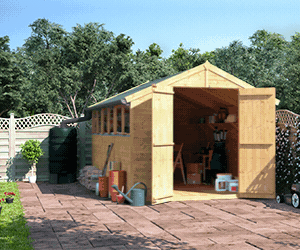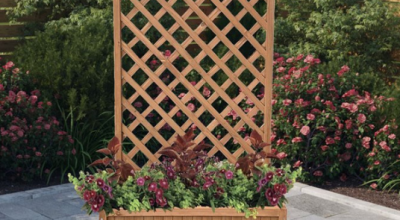Jump to:
Gardening is a gateway for kids to connect with nature. Through sowing and reaping, children can engage in healthy outdoor activities. This opens the world for them to discover the wonders of the natural world. Most importantly, find joy in the simple act of nurturing life. It’s an adventure filled with dirty hands, curious minds, and the joy of watching life sprout from the earth.
In this guide, we’ll share tips and tricks to make gardening an exciting, educational, and enjoyable experience for your little ones. Let’s turn those tiny seeds into bountiful harvests of learning and fun!
The Allure of Gardening for Kids

Gardening holds a unique appeal for children. It taps into their innate curiosity and love for exploration. It’s a hands-on activity where getting dirty is not just allowed, it’s encouraged! The playful interaction with soil and water ignites a sense of freedom and creativity. They are mesmerised by the process of planting a seed and nurturing it into a plant. Even better, they witness the magic of growth and change right before their eyes. This journey from seed to sprout to bloom offers a live-action show of nature’s wonders.
Beyond the fun, gardening is immensely educational. It serves as a live classroom where kids learn about the life cycles of plants. This helps them understand how they grow from seeds to mature plants that bear fruits or flowers. They discover the interdependence of ecosystems. And see how plants, insects, and animals coexist and support each other.
Gardening also instils a deep respect and responsibility towards the environment. Children learn the importance of caring for our planet. It starts with their little patch of earth, cultivating eco-friendly practices. This blend of joy and learning makes gardening enriching for young minds.
Age-Appropriate Gardening Activities

Gardening activities can be adapted to suit different age groups. This ensures that each child’s experience is both safe and fulfilling.
Toddlers (Ages 1-3)
- Activities: Exploring textures like feeling soil or leaves). Water plants with a small watering can. Picking safe, easy-to-hold fruits or vegetables. Consider cherry tomatoes, strawberries, snap peas, and baby carrots.
- Tools: Soft gloves and small, lightweight plastic watering cans. Plus, non-toxic, large seeds for planting.
Preschoolers (Ages 4-5)
- Activities: Planting seeds in pots and simple weeding. Helping to mix soil and compost. Identifying colours and shapes of different plants.
- Tools: Child-sized, lightweight gardening tools like a trowel or rake. Colourful and sturdy plastic pots and watering cans with easy grips.
School-aged children (Ages 6-12)
- Activities: Planting a wider variety of seeds and harvesting fruits and vegetables. Basic pruning. Starting simple garden projects like a butterfly garden or a vegetable patch.
- Tools: More sophisticated tools like hand pruners (with supervision). Gardening gloves that fit properly. Plus, they have their own set of child-friendly gardening tools but more similar to adult tools.
For all age groups, it’s important to choose tools that are designed for children. They should be the right size, lightweight, and without sharp edges. This ensures that gardening remains a safe, enjoyable, and educational experience for kids.
Top tip: Ensure the longevity of their garden tools by storing them in a sturdy BillyOh shed. This simple practice protects equipment from the elements, preventing rust and wear.
Creating a Kid-Friendly Garden Space

Creating a child-friendly gardening space involves ensuring safety and accessibility. At the same time, infusing elements of fun and education. Here are some tips and theme garden ideas for kids:
Safety and accessibility tips
- Choose a safe location: Ensure the area is away from hazards like sharp tools or chemicals. A flat, stable surface is ideal.
- Use raised beds or containers: These are easier for children to reach and manage.
- Non-toxic plants: Select plants that are safe if touched or ingested.
- Clear pathways: Ensure there’s ample space for kids to move around without tripping.
Garden theme ideas
- Pizza garden: Grow ingredients like tomatoes, basil, oregano, and bell peppers. This theme educates children on how their food grows and can be used in cooking.
- Butterfly garden: Plant flowers like lavender, milkweed, and marigolds to attract butterflies. This theme can offer lessons in pollination and ecosystem balance.
- Rainbow garden: Use a variety of colourful flowers and vegetables for the visual spectrum. This can teach colour recognition and aesthetic appreciation.
These themes make gardening more engaging and offer unique learning opportunities. They can turn the garden into an interactive, educational playground.
Interactive Learning Opportunities
Turn gardening into a fun learning experience with these interactive activities:
1. Garden journal
Encourage children to keep a journal. Let them record their observations, plant growth, and weather changes. To make it more interesting, inspire them to draw or paste pictures of the plants and insects they find. This enhances their observation and documentation skills.
2. Plant and insect identification
Teach children to identify different plants, flowers, and garden insects. Use field guides or apps to make this more engaging. This activity is excellent for introducing basic biology and ecology concepts.
3. Learning composting and eco-friendly practices
Introduce children to composting by setting up a small compost bin. Explain how composting works and its benefits to the environment. Doing so instils early lessons in sustainability.
4. Simple experiments
Conduct experiments like planting seeds in different conditions (varied light, water, soil types). Then, let them observe how these factors affect growth. Another experiment could involve tracking how plants grow towards light. This is an excellent way to teach kids about phototropism.
Celebrating Success and Learning from Failures

Celebrate the small victories and embrace the learning opportunities that come from failures. Every sprout, bloom, or harvested fruit is a triumph worth celebrating. These moments teach children persistence, patience, and the joy of success. Equally important is learning from failures, like a plant that doesn’t thrive. These instances are valuable lessons in resilience and the natural cycles of life.
Encouraging children to share their gardening journey adds another layer of enjoyment. It fosters a sense of community and teamwork. Plus, it’s a wonderful way for kids to showcase their hard work and dedication. Enjoying the fruits (and veggies – no pun intended!) of their labour together makes the experience even more rewarding.
Gardening together teaches children the value of sharing and working with others. This helps them feel more connected to nature and the people around them.
Round-up
As we’ve explored, gardening with children is more than just planting seeds. It’s a journey of discovery, learning, and joy. By involving them, we open a world of educational opportunities and fun experiences. The garden is a fertile ground for growth in many aspects. Let’s encourage our young ones to get their hands dirty as they connect with the natural world in our backyards!
Create an ideal gardening space by investing in a BillyOh greenhouse. Such a structure provides a controlled environment for plants’s optimal growth. Alternatively, opt for this playhouse shed that doubles as a potting shed. Cultivate your green haven with BillyOh!
Up next on your reading list: Outdoor Toys for Kids to Double the Fun













What do you think ?